The Ikonta range of folding medium format cameras complemented Zeiss Ikon’s Contax ‘system’ camera. They combined quality optics with leaf shutters in sophisticated bodies. The ‘Super Ikontas’ even featured a coupled rangefinder. They were made in three formats for 120 film. The A bodies were 6×4.5, the B’s were 6×6 and the C’s were 6×9. Other Ikonta models catered for 127 film (3×4) and 616 film (a huge 6.5×11 negative). The particular camera I’m basing this article on is a Zeiss Ikon Super Ikonta 532/16. One of the ‘B’ models, producing 6×6 negatives on 120 film. This model was first produced in 1936 and carried on in production for nearly 20 years.
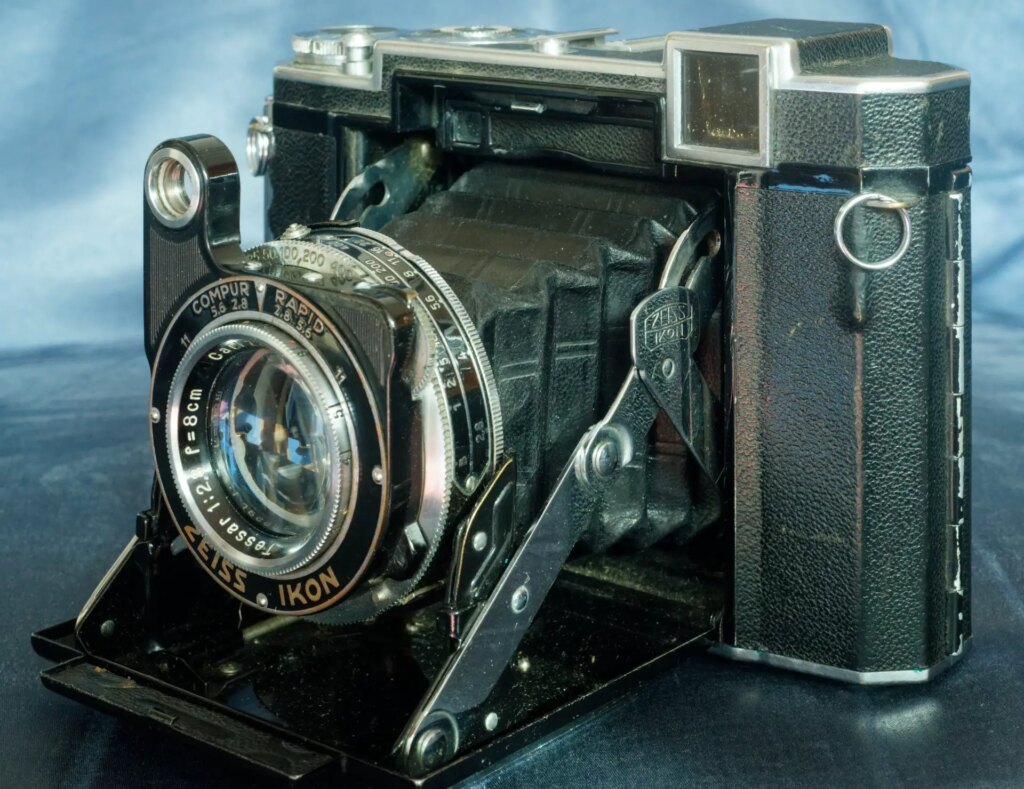
Far and wide
Production of these cameras before the war involved moving lots of bits about. The shutters originated in Munich. They were then transported to Dresden, where they would be combined with optics from Jena. Units were then shipped along with rangefinder units to Stuttgart where the modules were assembled and fitted into folding bodies.
The shipping and subsequent storage may explain some of the date anomalies that are noted for these cameras. The lenses have their own serial numbers. Often pre-war optics turn up on post war bodies: supposedly because they were in storage.
A real Ikon
Super Ikontas were regarded as the premier folding cameras of their generation. When war broke out the British government put out a call for people to donate their Super Ikontas for their war effort.
The British Army’s liking for Super Ikontas continued after the war. When my dad was an instrument maker for REME two miles behind the front line in Korea, Super Ikontas were commonly brought to him for repair.
The main models he remembered from Korea were the ‘A’ 6×4.5 f/3.5 folders. At the time I was looking for one to get for dad as a birthday present, but had to settle for a 6×6 f/2.8 model. At the time (over 10 years ago), I managed to pick one up for £50. They seem to go for considerably more these days.
A look around the camera
The Super Ikonta 532/16 weighs in at 980g without film
This particular model carries a ‘D’ serial number, which equates to manufacture in 1937 – this also fits with the serial number of the Tessar. These earlier cameras can be identified by the extensive use of Leatherette on the top plate and the black painted face plate for the lens/shutter/rangefinder unit.
Lens and shutter
The Ikonta 532/16 lens is an 8cm f/2.8 Tessar. It appears to be uncoated, as would be expected for a pre-war lens. Both front and rear elements are of an impressive size. The aperture is made up of 10 blades.
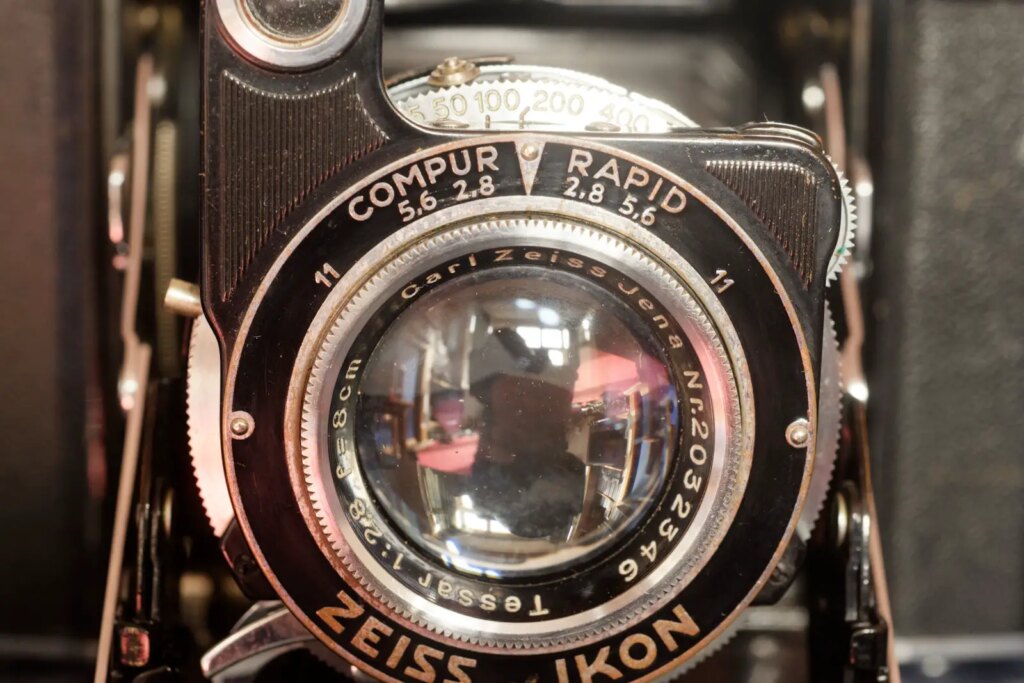
The Compur Rapid shutter has five blades offering speeds from 1 second to 1/400 plus B. You are supposed to select the shutter speed prior to cocking. I’ve seen it suggested that selecting the top 1/400 speed after the shutter is cocked may cause damage. A delay timer can be set. Post war models got updated (and slightly faster) speeds.
This camera appears to have a synch socket, which may have been added post war as it wasn’t supposed to be available until then.
Unfolding
The Ikonta 532/16 door and bellows mechanism itself is very neat, with it being deployed by pressing a shallow button on the top plate . The struts on the door are very sturdy and lock securely in place. To fold the camera back up you need to press the little ‘Zeiss Ikon’ bracing shoulder struts back towards the body
Rangefinder and focus
The early Super Ikontas all used a prism-based rangefinder attached to the standard. This makes for a self-contained unit, but the extra protuberances tend to complicate folding a bit. In the 6×6 models the implementation is quite neat (not requiring folding up before the bellows close) but is bulky. The rangefinder prism almost seems to duck its head at the last minute to fit in.
On the Ikonta 532/16 the rangefinder patch is integrated with the viewfinder. The co-incident image is produced by a rotating prism in the lens/shutter ‘standard’ unit at the front of the camera. As you focus the camera – either by turning the ring around the lens or using the little wheel on the side – the front of the lens moves back and forth and the prism revolves, moving the patch in the viewfinder.
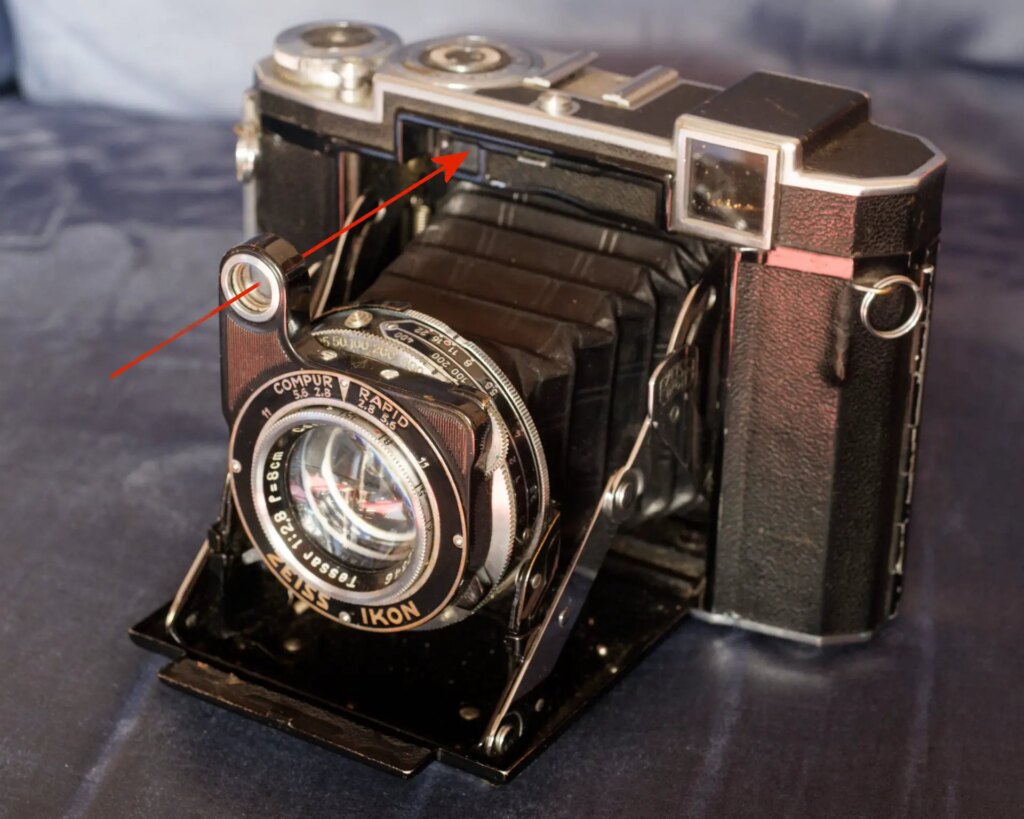
The focus on my father’s copy is a bit stiff – it may be that with a service it would free up considerably, but the rotating prism gives a good co-incident image and focus seems accurate, even after 85 years.
Film advance
Wind-on is via a knob on the right of the Ikonta 532/16. It features a little fold-up section that greatly eases the whole operation.
The left to right travel of the film means that frame numbers on the edge of the film are in the same orientation as the pictures – which might be viewed as a plus if you like to include the borders in your digitisations.
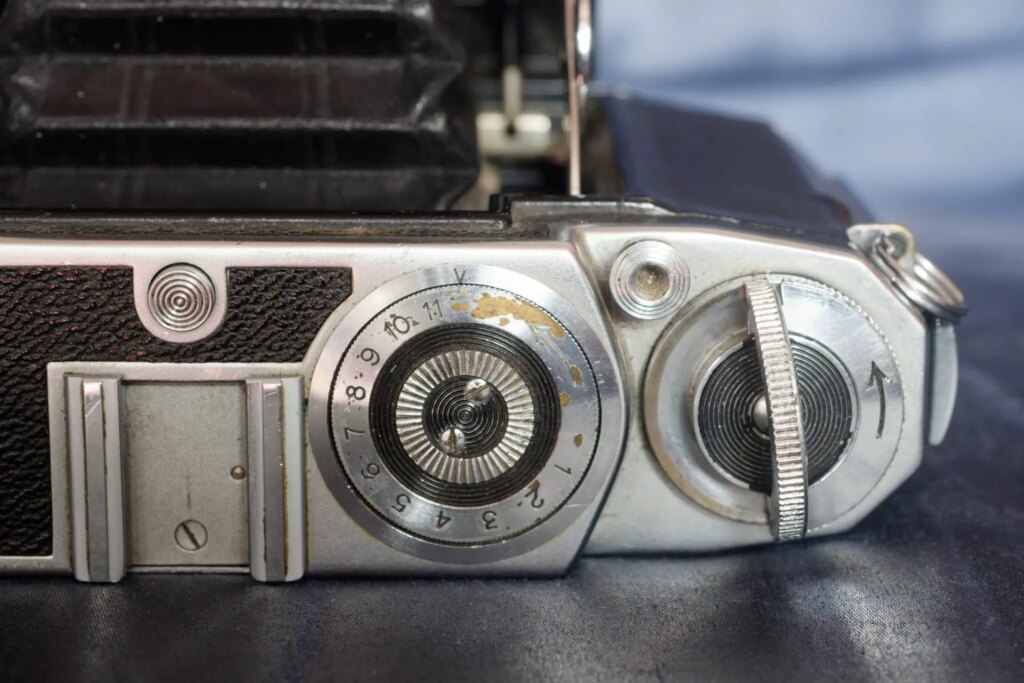
The Ikonta 532/16 has an automatic film counter. It would appear that Zeiss had problems with previous models with the frame spacing, which has left the 532 aiming for safely and producing just 11 frames off a roll of 120 film. The automatic spacing can be disabled. When loading film you use the red window in the rear of the camera to position to frame 1, set the counter on the top-plate to 1 and shoot away.
The mystery of the red window
The back of the Ikonta 532/16 may seem a little peculiar. The red window that allows you to line up the first frame is set to view the 6×9 numbers. If you disable the automatic spacing and rely on the numbers in the red window you will only get 8 6×6 shots on the roll. Because of the left-to-right film travel, the numbers on the backing paper visible in the red window will appear upside down. Why use the 6×9 red window position on a 6×6 camera?

There is a reason for this. When the Super Ikonta 532/16 was designed 120 films only had numbers for 6×9 spacing on their backing papers. Pre-war cameras using a 6×4.5 format tended to use two red windows on the backs of the camera to allow use with standard 120 film.
Kodak had a separate film format called 117, using the same film stock as 120, but designed to be used by 6×6 cameras. This film was standard for some early Rolleiflexes. After the war 120 would seem to have adopted numbering for different formats on its backing paper. 117 film was discontinued in 1949.
Many thanks to Jami Tanhu for solving my mystery by pointing out the lack of 6×6 numbers on 120 film at the time the 532/16 was first produced.
Shutter cocking and release
The shutter is cocked manually – automatic shutter cocking on a bellows camera was beyond even Zeiss’ love of complication at the time.
The shutter release is on the top-plate, with a neat set of levers in the fold-down ‘door’ transferring the motion to the Compur shutter.
In use
The Ikonta 532/16 is not a pocket camera. Not unless you have very big, strong pockets. However, the lens is delightful, even without coatings. Despite the stiff focus, the rangefinder seems accurate. Wind on and shutter cocking are straightforward, although I frequently found myself forgetting to cock the shutter.
It is quite a leisurely camera to use in practice, but is also quite comfortable.
Pictures
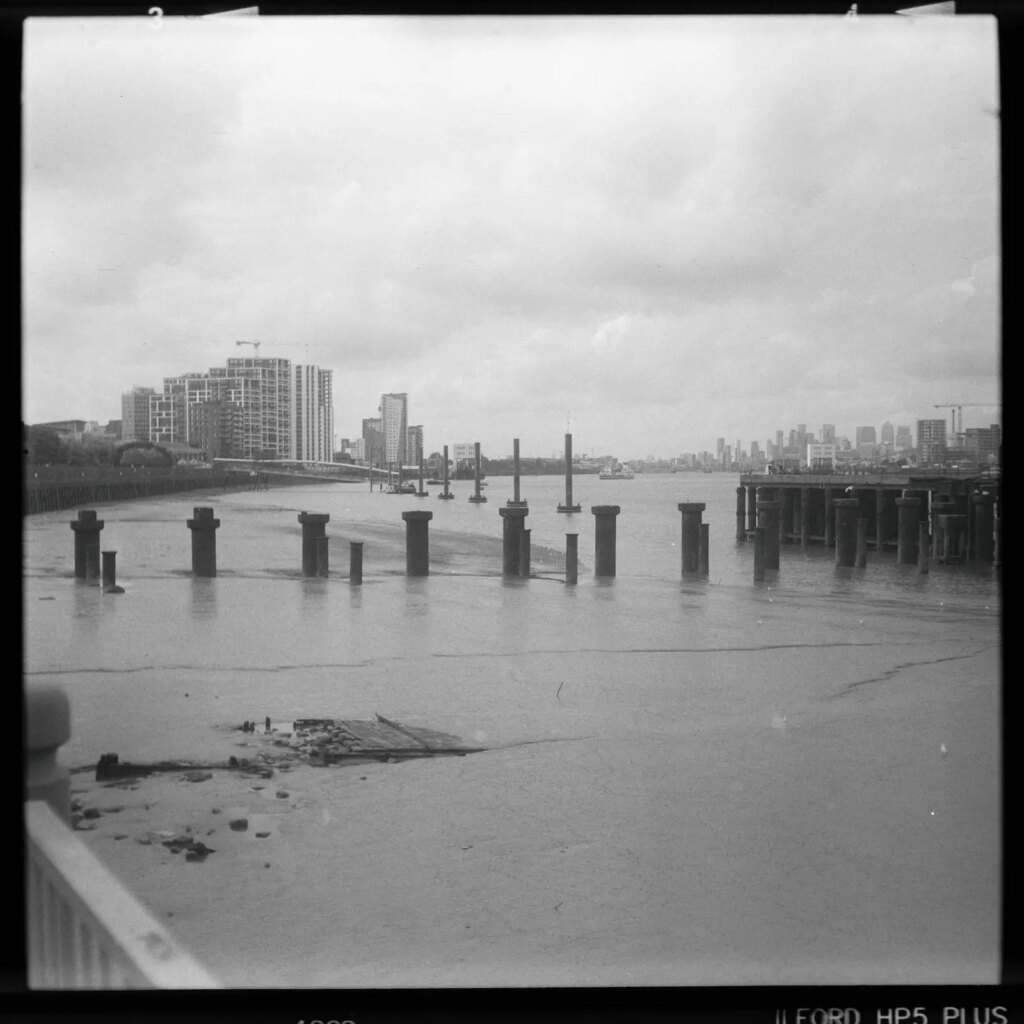
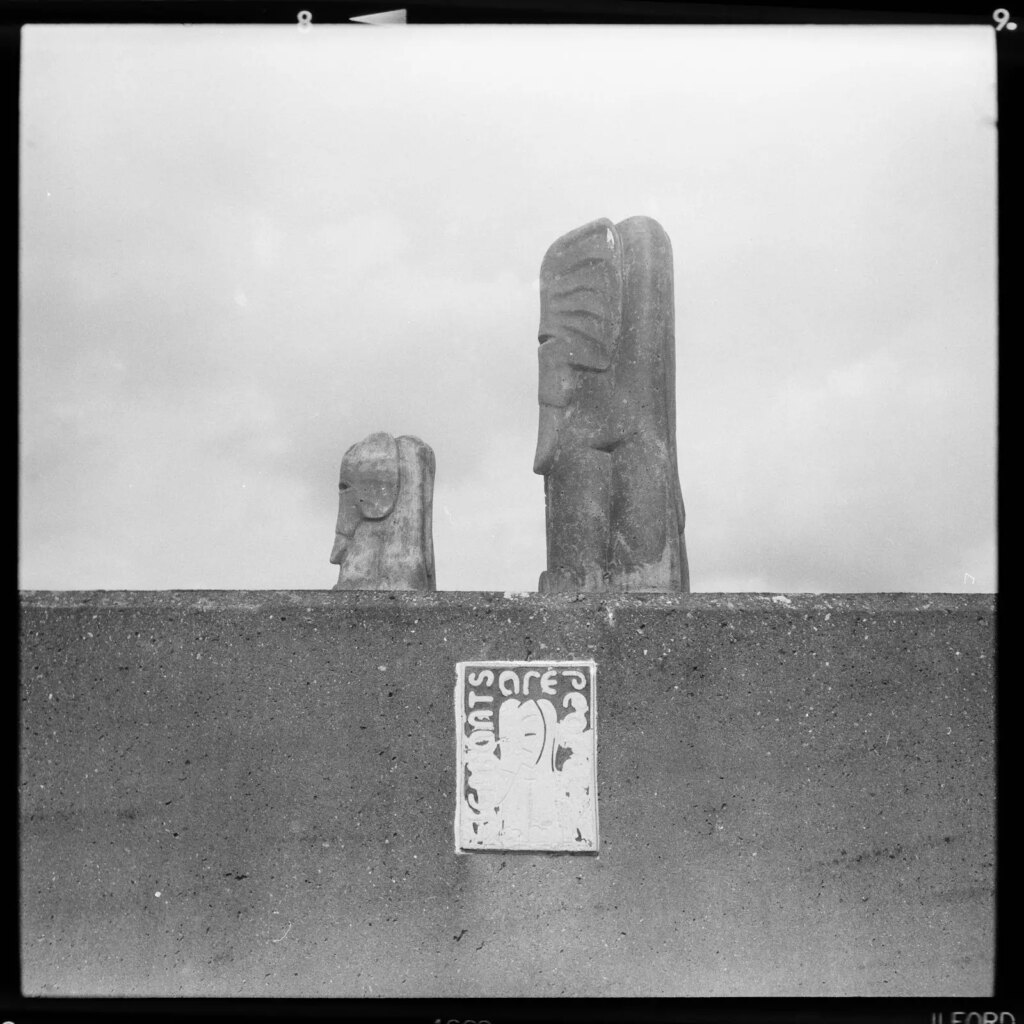
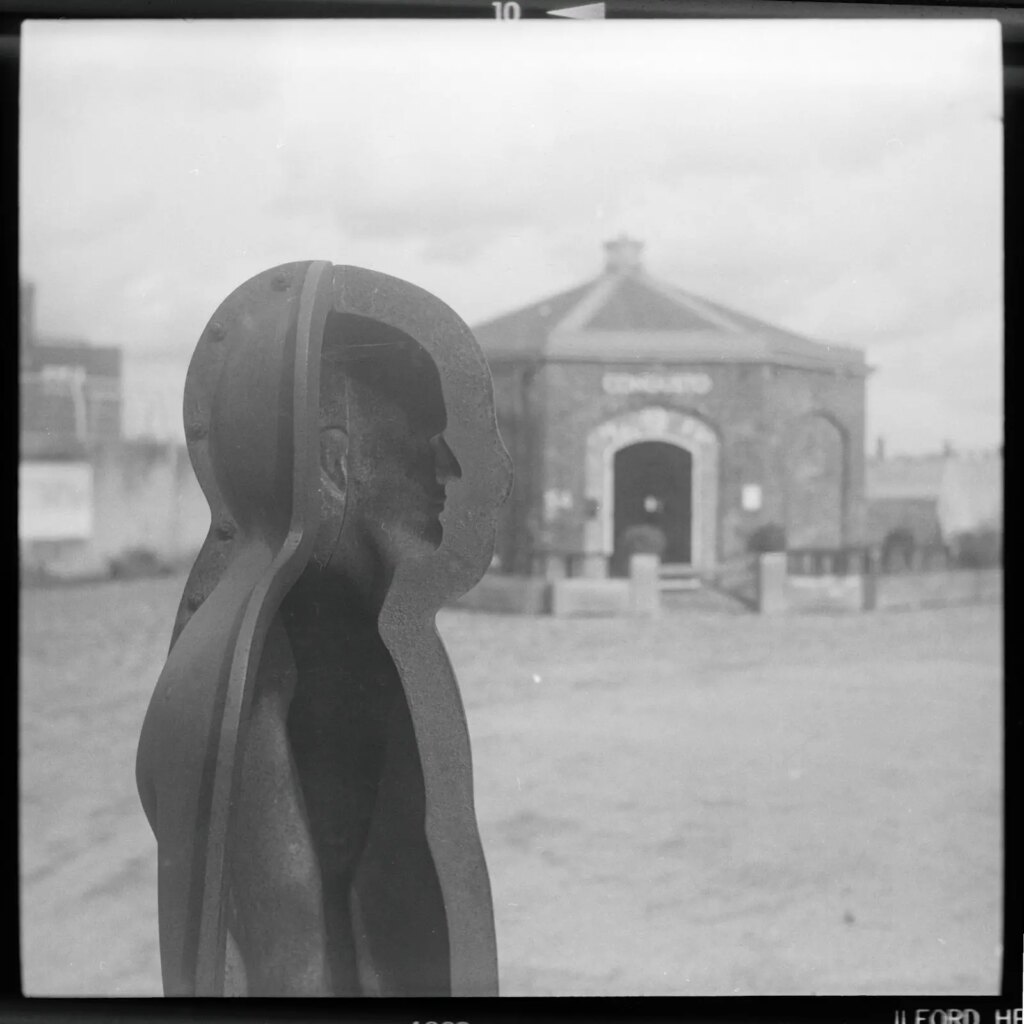
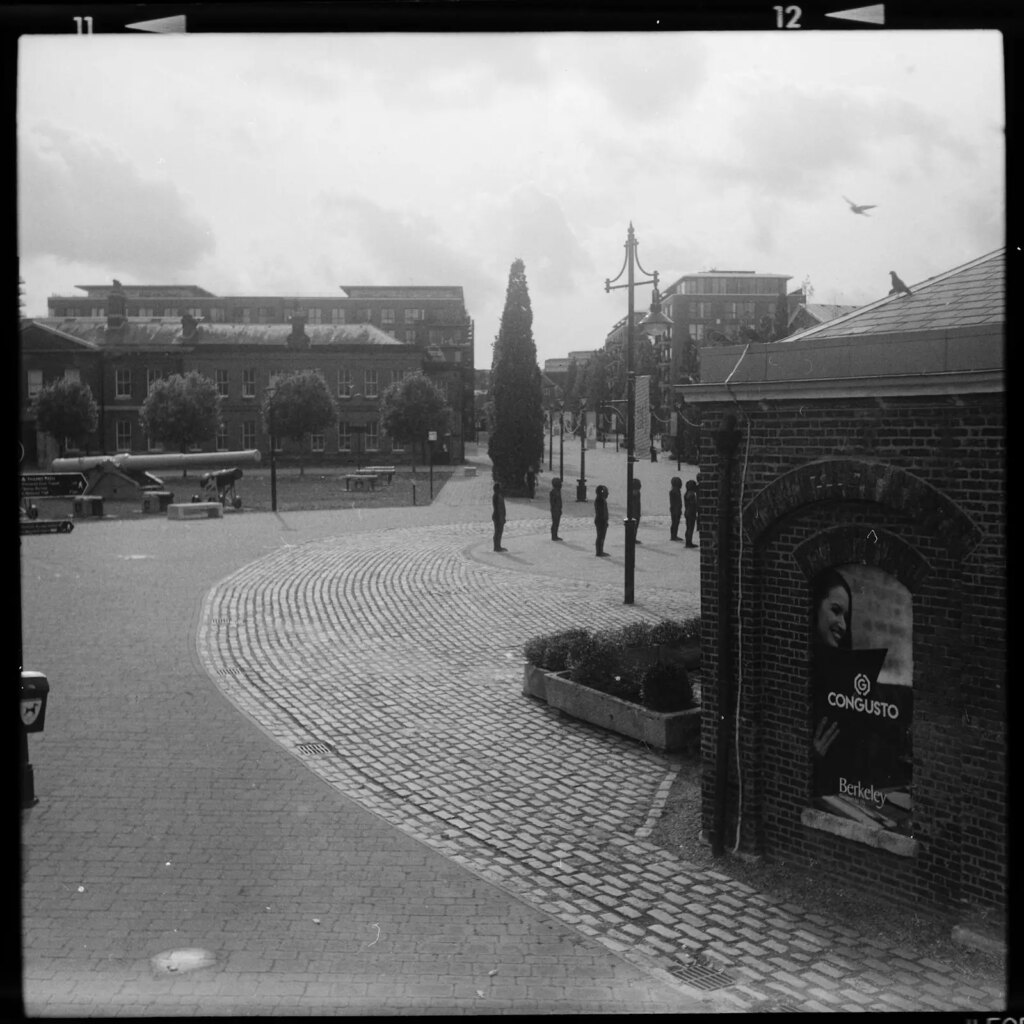
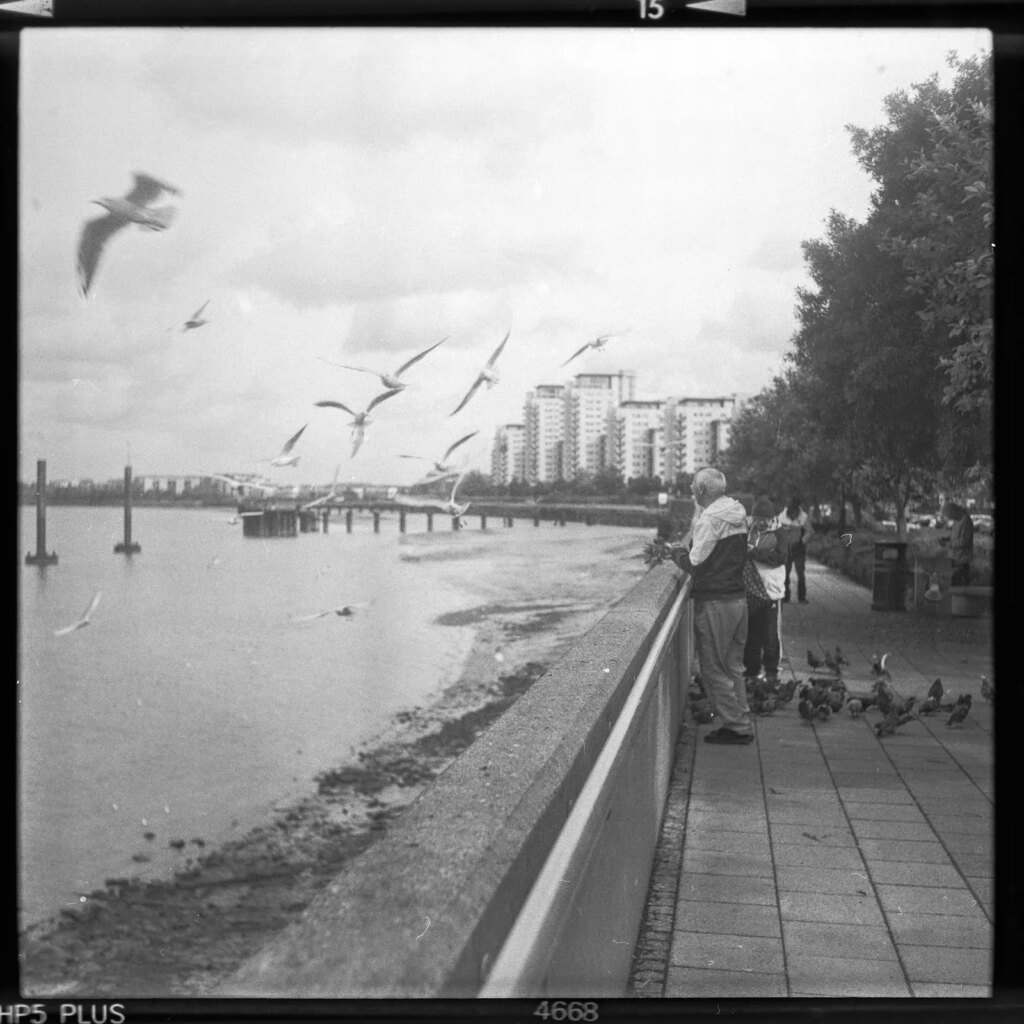
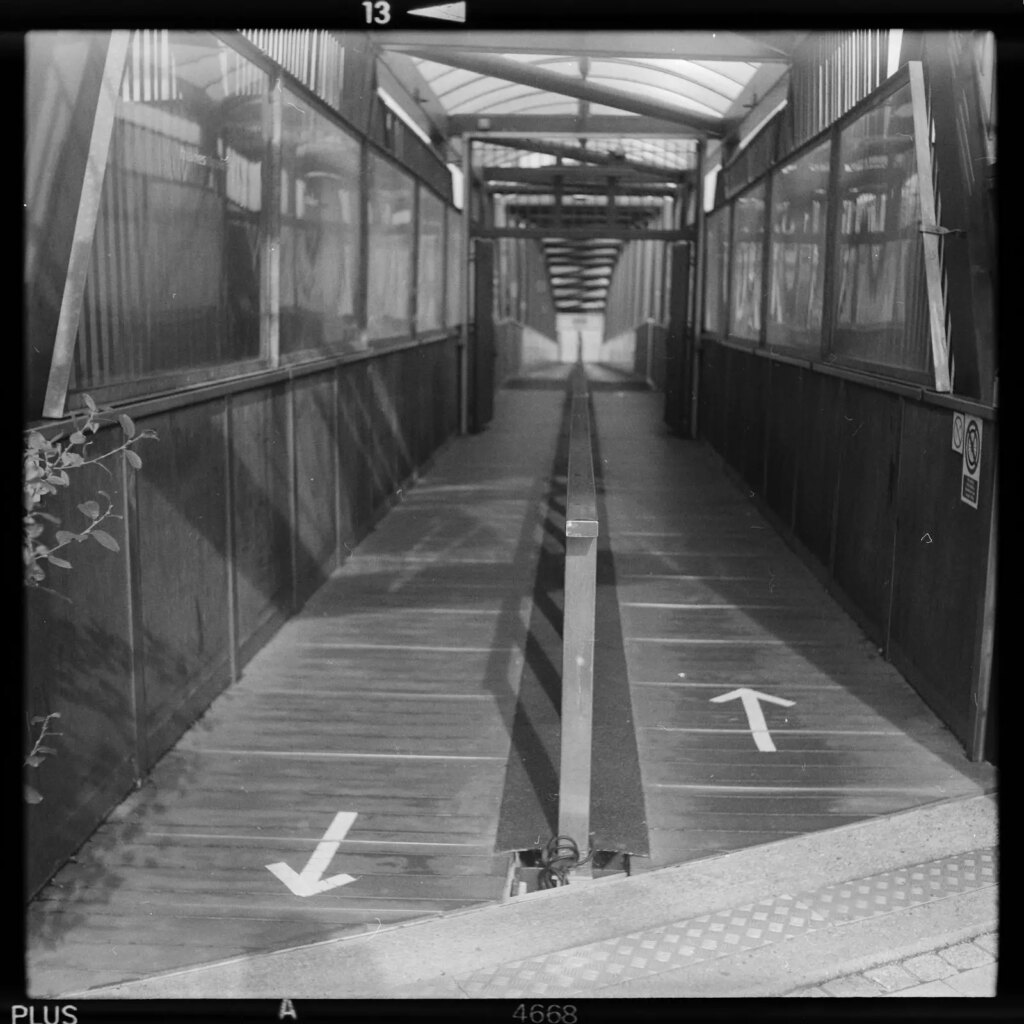
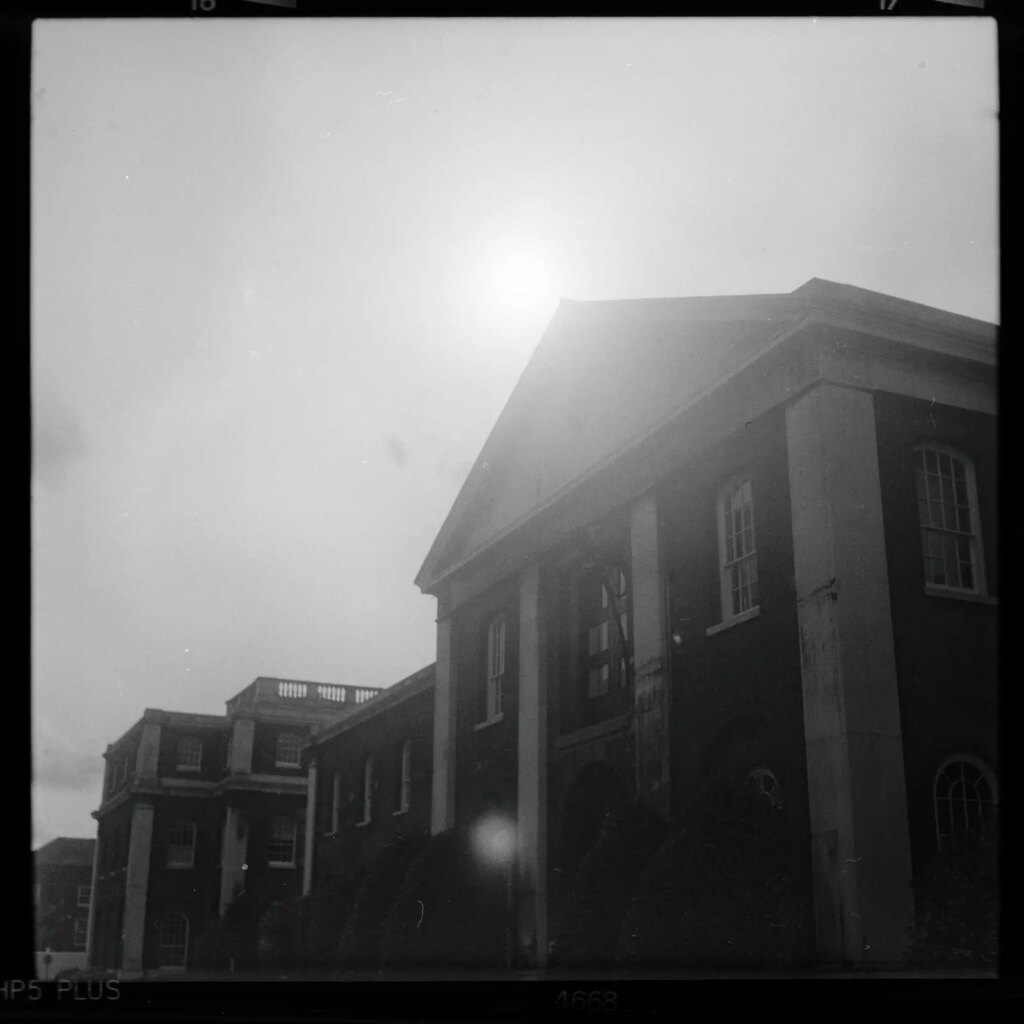
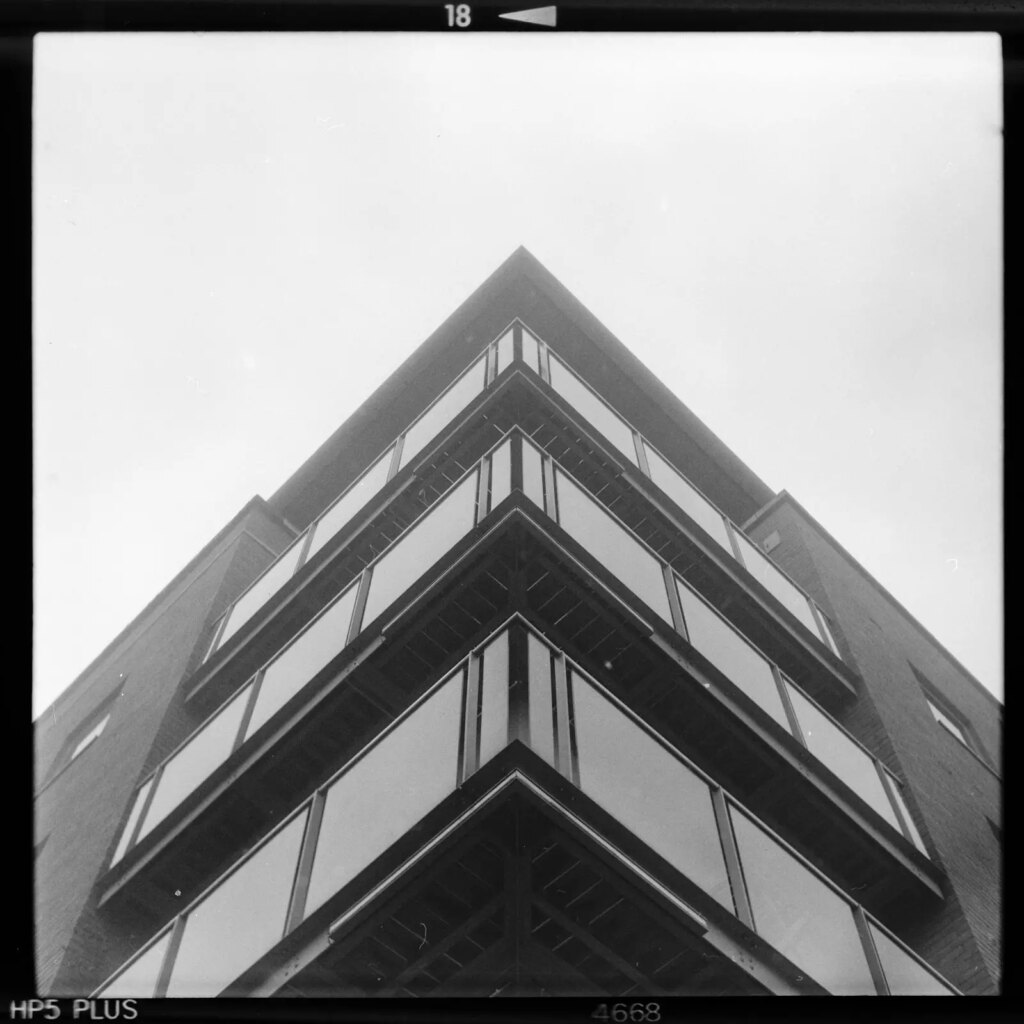
Conclusion
If you are looking for a quality medium format rangefinder, a Super Ikonta fills the bill very well. If you are interested in seeing more of what the Super Ikonta can do, have a look at LA Sousa’s or Eric Norris’ ‘5 frames’ articles taken with 533/16 cameras. The 533/16 was produced at the same time as the 532/16, but included a selenium meter on the top plate.
The Ikonta 532/16 and 533/16 were still being made up until 1955. As well as the restarting of production lines in Stuttgart after the war, jigs and dies also made their way back east, leading to a number of Russian built C type 6×9 Moskva cameras with similar construction.
Later Super Ikontas (the III and IV, one with and one without a selenium meter) abandoned rangefinder prisms on the standard in favour of a swinging mirror in the body, and continued in production until 1960.
Eighty-five years after manufacture, this particular Super Ikonta 532/16 has left me impressed.
Share this post:
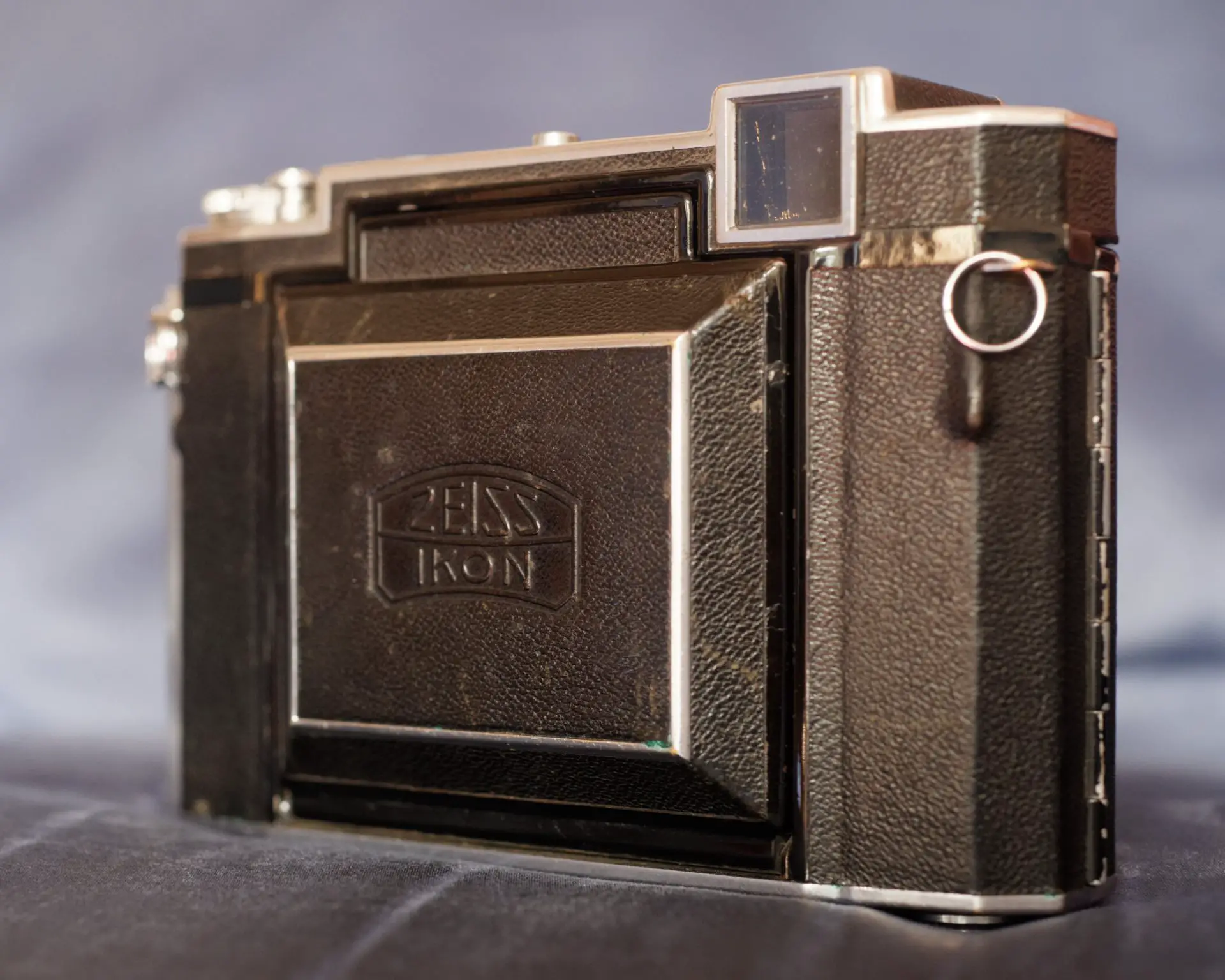








Comments
Kodachromeguy on Super Ikonta 532/16 Review – An Ikon – By Bob Janes
Comment posted: 28/11/2022
Comment posted: 28/11/2022
Jami Tanhu on Super Ikonta 532/16 Review – An Ikon – By Bob Janes
Comment posted: 28/11/2022
Comment posted: 28/11/2022
Zvonimit on Super Ikonta 532/16 Review – An Ikon – By Bob Janes
Comment posted: 28/11/2022
Comment posted: 28/11/2022
Comment posted: 28/11/2022
Robert A. Dill on Super Ikonta 532/16 Review – An Ikon – By Bob Janes
Comment posted: 03/03/2023
Comment posted: 03/03/2023
Anthony Lloyd on Super Ikonta 532/16 Review – An Ikon – By Bob Janes
Comment posted: 07/05/2023
Comment posted: 07/05/2023
Ken D. on Super Ikonta 532/16 Review – An Ikon – By Bob Janes
Comment posted: 14/06/2023
One correction, though, regarding the use of the Super Ikonta cameras by the Army Film and Photography Unit (AFPU) during WW2: They pretty much universally used the Super Ikonta B model like the one you acquired. If you go look at photos of British Army photographers from that period, they are all carrying the Super Ikonta B, either the 530/16 or the 532/16, and all have a lens shade attached.
Comment posted: 14/06/2023